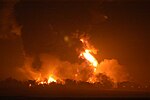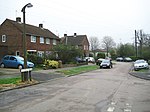Leverstock Green

Leverstock Green is a suburb in Hemel Hempstead, in the English county of Hertfordshire. It is located on the eastern edge of the town. Leverstock Green has a school, Leverstock Green Church of England Primary School, cricket club, tennis club, football club (Leverstock Green FC), village hall, shops, pubs and Holy Trinity church. Despite its recent amalgamation with Hemel Hempstead, the old names remain in memory of historical times.Leverstock Green is a "modern" parish, formed about 1849 from parts of the parishes of St Michael's (St Albans), Abbots Langley and Hemel Hempstead. There is documentary and archaeological evidence that people lived and worked in the immediate area of Leverstock Green from the time of the Roman occupation onwards. Recent research indicates that settlement along Westwick Row may well date back even further to the Iron Age and perhaps the Bronze Age. It seems quite likely that this settlement was a "suburb" of the major Iron Age settlement at Pre Wood just outside St. Albans. Leverstock Green was and is still affected by the 2005 Buncefield oil depot explosion (the largest explosion in peacetime Europe), causing damage to houses and other buildings, such as broken windows, fallen chimneys and in some cases more serious structural damage, temporarily displacing a number of families.
Excerpt from the Wikipedia article Leverstock Green (License: CC BY-SA 3.0, Authors, Images).Leverstock Green
Gravely Court, Dacorum Leverstock Green
Geographical coordinates (GPS) Address Nearby Places Show on map
Geographical coordinates (GPS)
| Latitude | Longitude |
|---|---|
| N 51.75 ° | E -0.43333333333333 ° |
Address
Gravely Court
Gravely Court
HP2 4PR Dacorum, Leverstock Green
England, United Kingdom
Open on Google Maps






